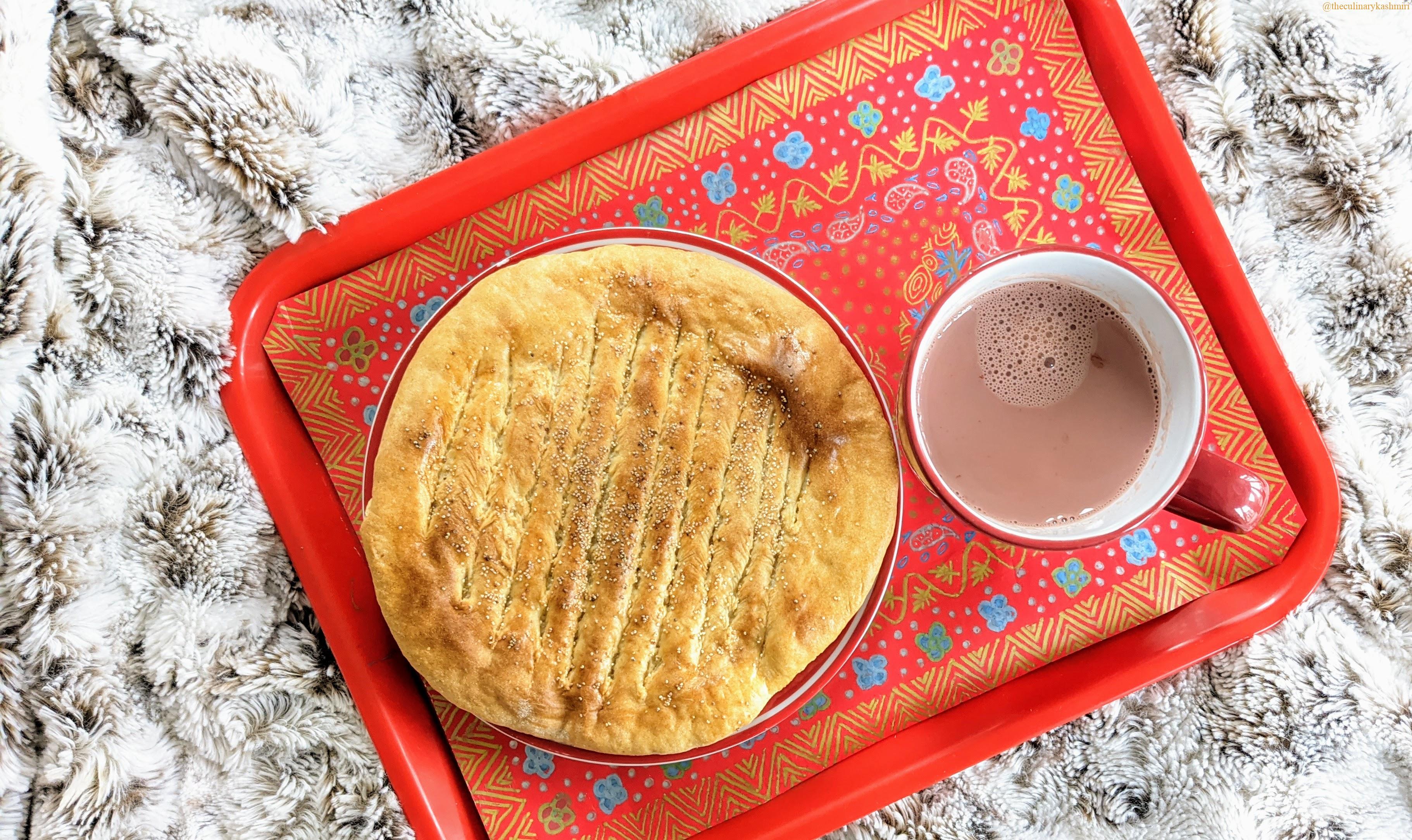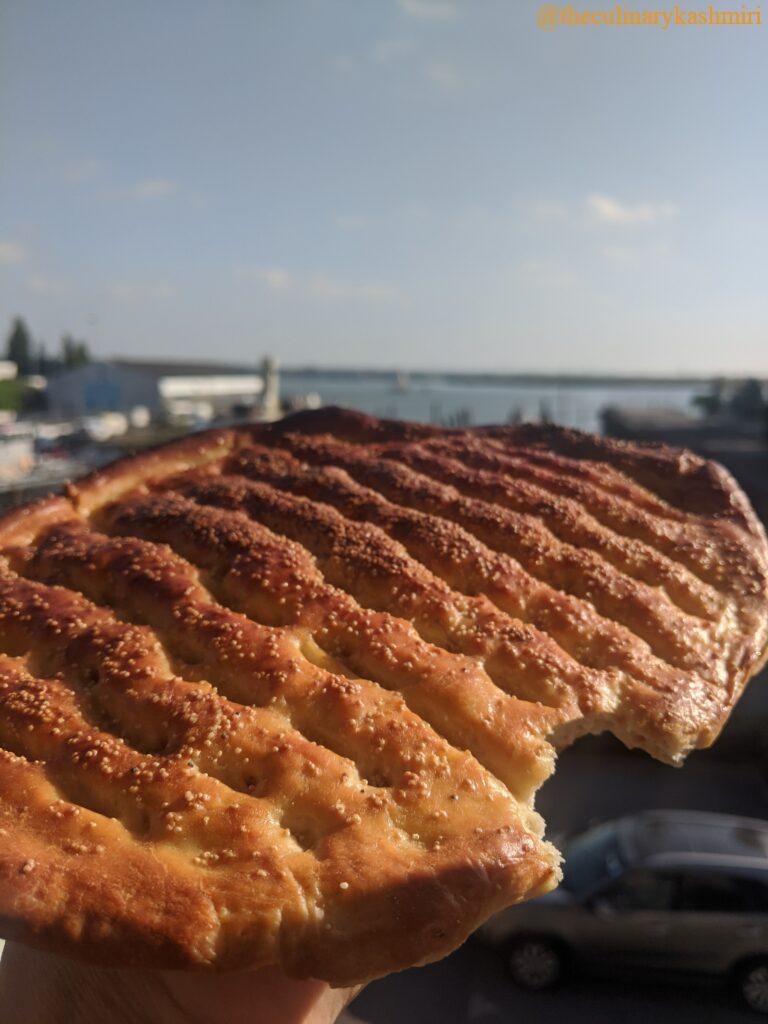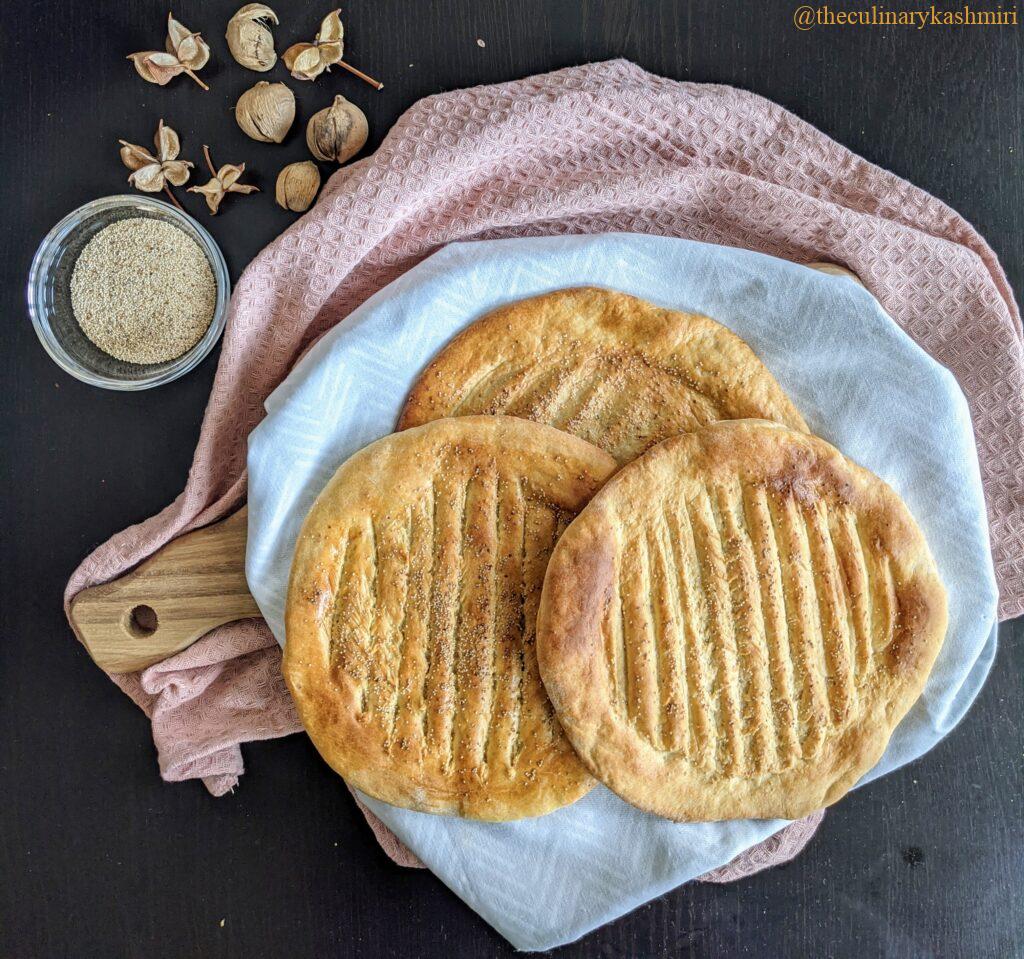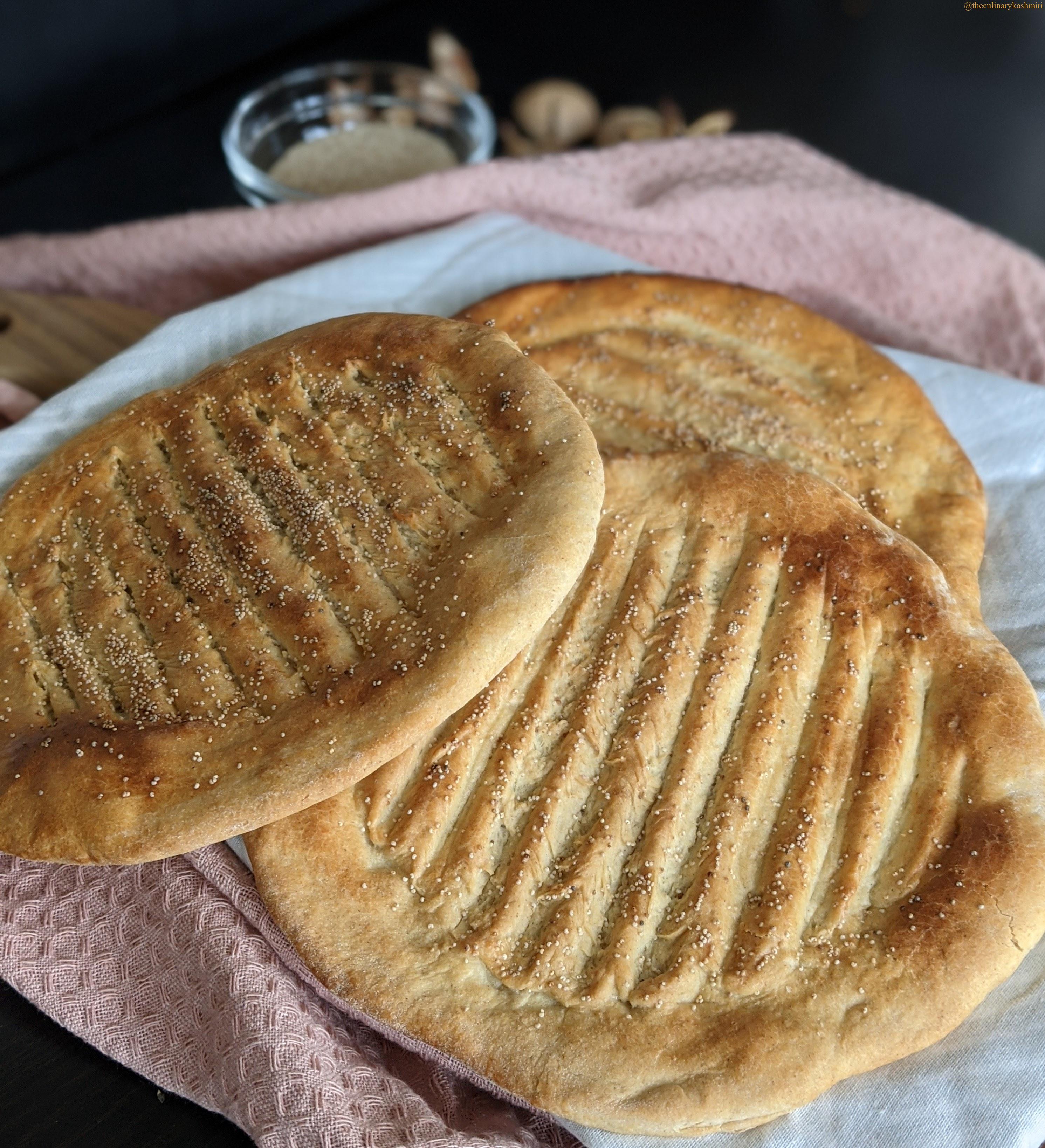Kashmiri Tchot

Kashmiri Tchot/Girda/Roti
It’s a chilly morning in January when Byul wakes up at 6 AM and defies all laws of laziness, leaping out of the warm and cozy covers, consisting of three or four blankets he had been snuggling in. He gets dressed in layers quickly, wears his pheran (a Kashmiri winter wardrobe staple which is a cross between a cloak and an overcoat), grabs a kangir (the Kashmiri solution for beating cold: a coal-fueled, hand-held heater) and leaves the house. So does the elderly Hae’j Saeb next door, little Aadil Jan, jolly Gull’e, grumpy Bash Laal’e and one member from just about every household in the neighborhood. They all rush to one common destination- kaander waan: the local baker’s shop.
All the neighbours get chit chatting while the kaandur bakes tchoth’e in an underground clay oven or tandoor fitted in the floor. Byul asks Adil Jan to share a kangri josh while they get into a discussion about last night’s cricket match, performing a tactical analysis of Pakistan’s strategies that didn’t work for them. Hae’j Saeb starts a debate about the economics of the mohalla committee (neighbourhood committee) and the others slide their hands inside the sleeves of their pherans sharing their insightful opinions. In addition to small talk and local gossip, the discussions sometimes gravitate towards politics and they all send some trath (curses) to the oppressors.
Kaandar waan is the neighborhood hub of the social and gregarious vibes that Kashmiris bring along wherever they go. In a world where neighborhood social media groups are trending, poor Kashmiris do not have access to internet because the authorities snap these services most of the time. However, the optimistic Kashmiris like to socialize and keep up with the neighborhood ongoings by the old school means of face to face interaction with each other, beginning at the kaander waan, early morning, each day. In Kashmir, there is at least one kaander waan in each locality, specializing in, and specifically baking local breads: tchot for breakfast, tchotchwor for afternoon tea, katlam, kulcha, etc. The kander waan serves its fixed customer base of locals everyday. For cakes, biscuits and patties, we have a multitude of continental bakeries as well, mostly situated in uptown areas.
Bash Laal’e starts losing his patience and snaps at the poor kaandur to speed up. Gull’e jokingly asks him if he didn’t have batt’e (rice) last night for dinner. Finally the kaandur starts giving them their tchotch’e. One free tchot for his loyal customers for every six tchotch’e they take. (I don’t know about others, but our kaandur had this offer going on all my life.) They follow this routine January through December every single day. Not just people in this neighborhood but throughout the Kashmir valley.
Byul takes eleven tchotch’e from the kaandur but by the time he reaches home, there are only eight and a half left because he can’t resist the temptation of these hot, crispy delicacies while walking back home. At home everyone is waiting as steaming hot nun chai is ready to be served with the tchotch’e, topped with a generous layer of butter.

So what is this bread that attracts everyone to the baker’s shop every day at the crack of dawn? You have to give it a try to know for sure that it is totally worth it.
I’m sharing the recipe for the kaander tchot made with ghee: ghaev tchot. Ghaev tchot is the special edition of the tchot that the kaandur bakes in a limited quantity, usually on orders only, and on special occasions like the holy month of Ramadan. Some kaandurs have a fixed customer base for this variety of the tchot for the mid-morning tea. Since the busiest period for the kaandur is over by 8 am, he is free to put in extra efforts in this second batch of tchotch‘e. This explains the meticulously crafted, neat ridges in the gheav tchot that give it a glamorous look. This, and the fact that the kaandur wants it to stand apart from its counterpart- the plain tchot. No wonder the price gets doubled.
Tchot is the traditional Kashmiri flatbread, sort of a naan but way more flavourful. Its slightly crisp crust with chewy insides sets it apart and delivers a delicious flavour that we all like to savour each morning. The recipe is simple, requiring only a few ingredients. And no matter how it turns out in terms of looks, it’s always going to taste DELICIOUS.

If you enjoyed reading this recipe, do check out my recipe for Kashmiri Kulcha as well. Also, please find me on Instagram for more food ideas and show some love!

Kashmiri Tchot || Kander Tchot || Girda || Roti
Ingredients
Dry Ingredients
- ¾ tsp sugar
- 2 cups all purpose flour
- 1 tbsp instant yeast
- ¼ tsp salt
- ½ tsp baking soda
Wet Ingredients
- 2 tbsp ghee (melted)
- lukewarm water (about ½ cup)
- 1 tbsp yogurt
Garnishing
- 1 tbsp poppy seeds
Instructions
- To activate the yeast, take the warm water in a mug. Stir in the sugar and yeast. Cover and let it sit for about 10 minutes until the mixture is covered in froth.
- Sift rest of the dry ingredients: flour, salt and baking soda in a large bowl using a sieve. Whisk well.
- Add in the ghee and yogurt. Start kneading the dough by adding the yeast-water mix, little by little.
- If doing manually, knead well for about 10-12 minutes.
- Brush the dough with oil or ghee and cover the bowl with a cling film. Put in a warm place to allow it to rise, for 2-3 hours, until it doubles in size.
- Deflate the dough and knead for a minute again. Divide it into three equal portions.
- Preheat the oven to its highest temperature setting. And preheat an iron skillet or tawa pan on the hob.
- Roll out one portion with the help of your hands or a rolling pin. Use your fingers to make impressions all over, leaving a border by the edges.
- Brush it with water/milk and sprinkle poppy seeds on top.
- Place it on the preheated skillet, flat side facing down, and cook on medium heat for about 3-4 minutes.
- Remove from the skillet and place it on a baking tray and broil it in the middle rack of the pre-heated oven for about 2 minutes. (That is, bake it on the grill setting.) The time taken may vary from oven to oven, so be cautious not to burn it.
- Repeat the same instructions for the remaining two portions of the dough.
Notes
- This tchot can be frozen for freshness. Reheat directly from frozen just before eating, in an oven or toaster, and it is nearly as good as freshly baked.
- Ghee can be omitted. However, it tastes better with ghee (obviously) and lasts longer.
- Yogurt gives the tchot its chewy, stretchy texture. Some recipes use milk or milk powder instead.
- Egg wash gives it a shiny texture on the face. However, milk wash is the authentic way to go about. Brushing with water works well too.
